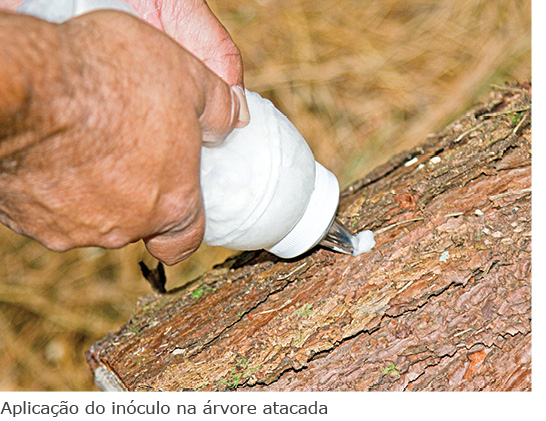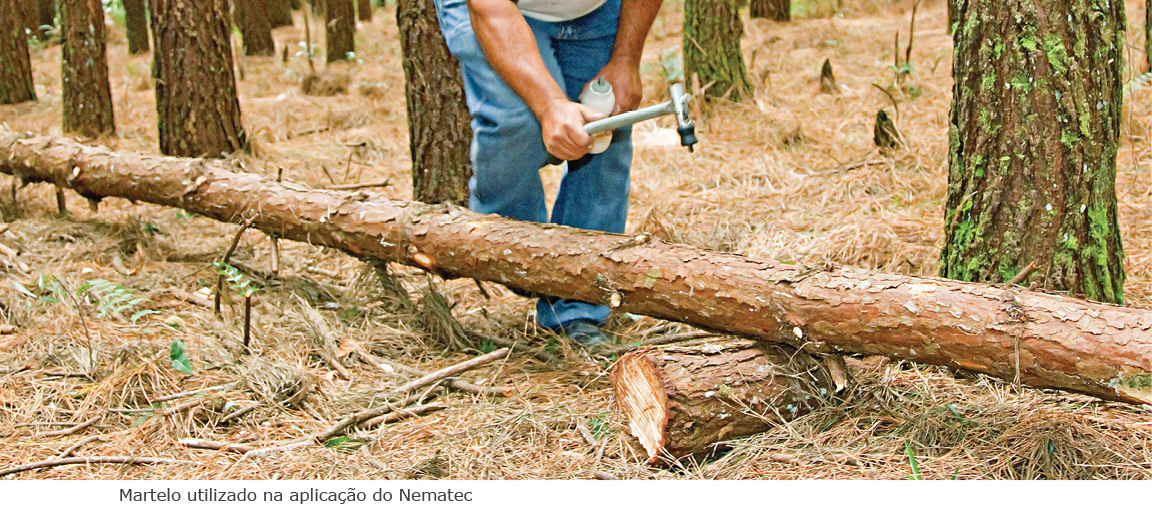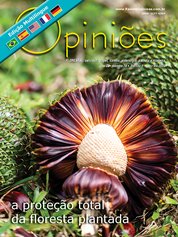Susete do Rocio Chiarello Penteado
Researcher at Embrapa Florestas
OpCP70
The program national wood wasp control
One of the most important and well-known pests in the forest sector, the wood wasp (Sirex noctilio), completed 34 years of registration in Brazil and continues to be the protagonist when it comes to pests that cause damage to pine plantations . However, the partnership between the public sector and the private sector resulted in the creation and execution of one of the most successful and comprehensive integrated forest pest management programs in our country.
Wood Wasp Control Program was created in 1989 by the Ministry of Agriculture, Livestock and Supply, fundamentally aiming to propose actions to contain the spread and damage caused by this pest. To give financial support to this program, in June 1989, the National Fund for the Control of Forest Pests was also created, made up of more than a hundred forestry companies linked to the pine production chain.
Originally from Europe, Asia and North Africa, the wood wasp was introduced in several countries, where it has caused economic losses. Attracted by stressed plants, the first record in Brazil occurred in 1988, in Pinus taeda plantations without thinning, located in the municipalities of Gramado, Canela and São Francisco de Paula, in Rio Grande do Sul. Later, its presence was recorded in the states of Santa Catarina (1989), Paraná (1996), São Paulo (2004) and Minas Gerias (2005).
 It attacks Pinus species, with Pinus taeda and Pinus patula being the most susceptible. Pinus elliottii, due to its higher resin content, is generally less attacked. However, the practice of resin casting ends up making this species attractive. With regard to tropical pines, attacks on all species planted in Brazil have already been recorded . Damage is related to insect behavior and tree physiology.
It attacks Pinus species, with Pinus taeda and Pinus patula being the most susceptible. Pinus elliottii, due to its higher resin content, is generally less attacked. However, the practice of resin casting ends up making this species attractive. With regard to tropical pines, attacks on all species planted in Brazil have already been recorded . Damage is related to insect behavior and tree physiology.
Thus, the attack presents an initial phase of plant predisposition, when the trees are damaged or stressed by biotic and/or abiotic factors, followed by a stress reinforcement phase, which occurs when the female, when performing the posture, injects a mucus. phytotoxicant and spores of a symbiotic fungus, and, finally, the development phase of the symbiotic fungus, which will serve as food for the larvae of the wood wasp. This whole process culminates in the death of the tree, which can occur a few months after the attack.
Some conditions, such as the inadequacy of silvicultural practices , and, among them, the delay or failure to perform thinning, have provided a favorable environment for the development of the wood wasp and its population increase. However, even under these conditions, if planning and intensifying monitoring and control activities are carried out, it is possible to minimize the losses caused by it.
The National Wood Wasp Control Program was elaborated contemplating forest management actions, as a measure to prevent attacks; quarantine and legislative measures to delay their spread; monitoring, through the use of aerial mapping, installation of trap trees and terrestrial sampling; control measures, with emphasis on biological control with the nematode Deladenus siricidi cola and the parasitoids Ibalia leucospoides, Rhyssa Persuasion and Megarhyssa nortoni, in addition to technology transfer activities.
Wood Wasp Control Program is biological control through the use of the nematode, which acts by sterilizing the insect's females. Imported from Australia, it has been produced since 1990 at the Forest Entomology Laboratory of Embrapa Florestas. In 2018, registration was obtained from the Ministry of Agriculture, Livestock and Supply under the name Nematec, as a phytosanitary product approved for use in organic agriculture, as it is considered to have low environmental impact and low toxicity. Nematec is the first product registered for use with Deladenus siricidicola.

Nematec is produced between March and August, and weekly doses of Nematec are sent to pine producers with the pest in their plantations, each dose being enough to treat about 10 trees. For the inoculation of Nematec in the tree, it is felled, and, using a special hammer, perforations are made along the trunk. The dose is mixed with a thickener ( hydrogel ) and introduced into the tree.
During the monitoring of pine plantations, which can start in February and must end before the end of nematode production (August), to allow areas to be controlled with Nematec, a plan is made for the number of trees to be planted. will be inoculated with the nematode. It is recommended to inoculate at least 20% of the attacked trees and, under these conditions, it is possible to reach an average level of control of 70%.
In addition to the nematode, the parasitoid wasps, Ibalia leucospoies and Megarhyssa nortoni, both also introduced, help to reduce the population of the pest, but are complementary to the use of the nematode. The monitoring and control of the wood wasp are activities that are part of the management of pine plantations by companies and forestry producers. These activities are essential to keep the population at low population levels and avoid economic losses.
The first case of success in controlling the wood wasp in Brazil occurred in the municipality of Encruzilhado do Sul in Rio Grande do Sul, in a plantation of 12,000 hectares of Pinus taeda, which had about 30% of the trees attacked. Nematode inoculations were carried out between 1990 and 1993, resulting in parasitism percentages of more than 90%, and in 1995 the presence of attacked trees was insignificant.
However, in the same region, in 2018, pine stands with up to 70% attack were recorded. The actions provided for in the National Wood Wasp Control Program have allowed keeping the wood wasp population under control in Brazil. However, at each new crop rotation, it is necessary to establish monitoring through the use of trap trees, sequential sampling or systematic sampling.
In plantations over seven years old and when the presence of the pest is identified, it is necessary to inoculate the nematode in at least 20% of the affected trees. In this way, it is possible to reduce the losses caused by this pest and ensure the productivity of pine plantations . Currently, in most places where the nematode is being used, the results are very satisfactory, with the occurrence of parasitism percentages above 70%.




